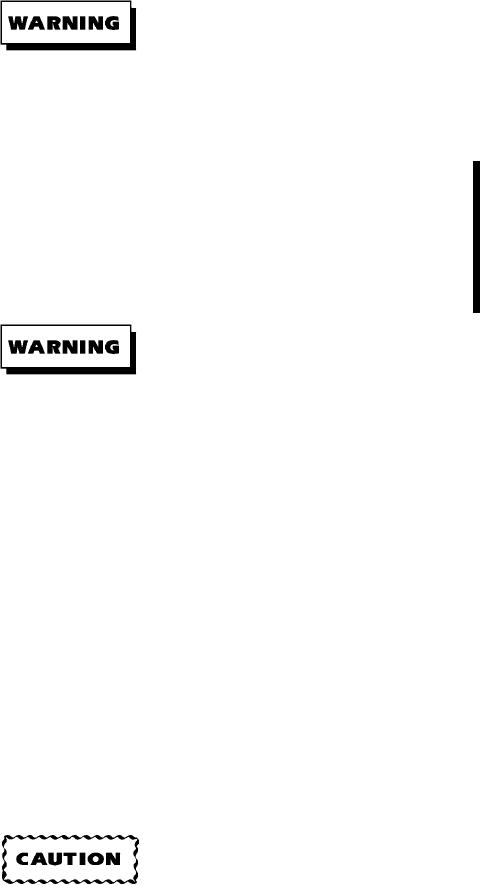
TM 5-2420-230-24-1
b. Cleaning.
Degreasing Solvent (MIL-PRF-680) is toxic and flammable. Keep away from heat or flame. Never
smoke when using solvent. The flashpoint for Type II Degreasing Solvent is 141 F (61 C). Wear
protective goggles, face shield, and gloves; use only in a well-ventilated area; avoid contact with
skin, eyes, and clothes; and do not breathe vapors. Failure to comply may result in injury or death
to personnel.
If personnel become dizzy while using cleaning solvent, immediately get fresh air and medical
help. If solvent contacts skin or clothes, flush with cold water. If solvent contacts eyes, immediately
flush eyes with water and get immediate medical attention.
Adhesives, solvents, and sealing compounds burn easily and give off vapors that are harmful to the
skin and clothing. To avoid injury or death, keep away from open fire when using these materials,
and use only in well-ventilated areas. If adhesives, solvents, or sealing compounds contact the skin
or clothing, wash immediately with soap and water, and rinse thoroughly. Failure to comply may
result in injury or death to personnel.
Wear dust mask and eye protection when removing dust from brake drum and mechanism. Failure
to comply may result in personal injury.
To avoid personal injury, wear protective equipment when using compressed air. Failure to comply
may result in injury or death to personnel.
(1)
Using degreasing solvent and a clean cloth, thoroughly remove all dust from brake drum and brake mechanism.
(2)
Using compressed air, blow dry brake drum and brake mechanism.
c. Inspection.
Examination of brake components entails removal of brake drum, cleaning out dust, and inspection and adjustment of
brake linings.
(1)
Examine brake drum for signs of scoring, heat cracks, wear, etc. Replace as necessary.
(2)
Inspect brake linings for damage, oil contamination, and wear. The minimum allowable thickness of the liner is
0.3 in. (8 mm), measured at the center of the brake shoe. Replace linings as necessary.
(3)
Inspect brake shoes for signs of glazing, heat cracks, or deterioration. Replace as necessary.
(4)
Check brake shoe rivets for signs of looseness and wear.
(5)
Inspect brake springs, anchor pins, and shoe retainers for signs of damage and/or wear. Replace as necessary.
(6)
Slightly operate brake adjuster and ensure shoe cam actuator moves.
d. Installation.
Failure to clean mating surfaces may cause the brake drum to distort upon tightening of wheel nuts.
(1)
Ensure mating surfaces of brake drum and axle flange are clean prior to replacement of brake drum.
Change 1
8-5

